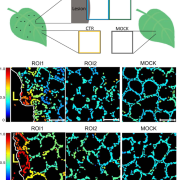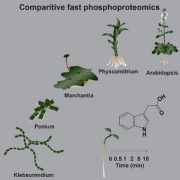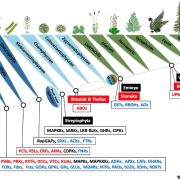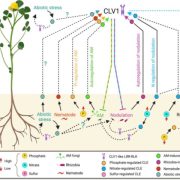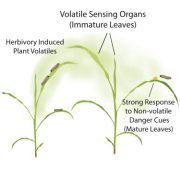Identification of a plant receptor required for cell-to-cell reactive oxygen signaling
Fichman et al. identify a key player linking reactive oxygen species and calcium signals (but not electric signals) during responses to light stress. https://doi.org/10.1093/plcell/koac241
Yosef Fichman and Ron Mittler
Division of Plant Sciences and Technology, College of Agriculture Food and Natural Resources and Interdisciplinary Plant Group, University of Missouri, Columbia, MO 65211, USA.
Background: Plants grow and reproduce in a highly dynamic environment that can change abruptly. To adjust to changes in their environment, the different cells of a plant communicate with each other exchanging signals that coordinate responses to the environment between different parts and tissues of the plant. The different signals plant cells exchange with each other include hormones, electric signals, hydraulic pressure signals, and calcium and reactive oxygen species signals/waves. The ability of plant cells to communicate with each other plays a key role in plant acclimation to different environments and overall survival during stress.
Question: Although the different signals exchanged by plant cells have been studied, how they are linked with each other and how reactive oxygen species and calcium regulate each other are largely unanswered questions.
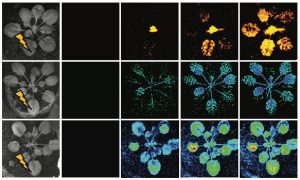
Induction of electric (Vm), calcium (Ca2+) and reactive oxygen species (ROS) waves by a local treatment (lightning symbol) of excess light stress.
Findings: Our study identified the plant receptor required for the exchange of reactive oxygen species signals between cells. This receptor was also found to be a key player in linking reactive oxygen species and calcium signals (but not electric signals) during responses to light stress. Studying different mutants deficient in mediating cell-to-cell reactive oxygen species signals we also identified the signal transduction cascade that links the reactive oxygen species receptor with the enzyme that produces reactive oxygen species on the extracellular side of the plant plasma membrane. Our work therefore dissected the reactive oxygen-induced-reactive oxygen-release cell-to-cell signal transduction pathway of the plant that is also known as “the reactive oxygen species wave”.
Next steps: One of the most important next steps is to determine how the reactive oxygen species receptor regulates calcium signals. We identified a putative calcium-permeable channel involved in this pathway, but the protein-protein interactions and mode of regulation of this (or other) calcium-permeable channel by the receptor remains to be determined.
Reference:
Yosef Fichman, Sara I Zandalinas, Scott Peck, Sheng Luan, Ron Mittler (2022) HPCA1 is required for systemic reactive oxygen species and calcium cell-to-cell signaling and plant acclimation to stress. Plant Cell. https://doi.org/10.1093/plcell/koac241


